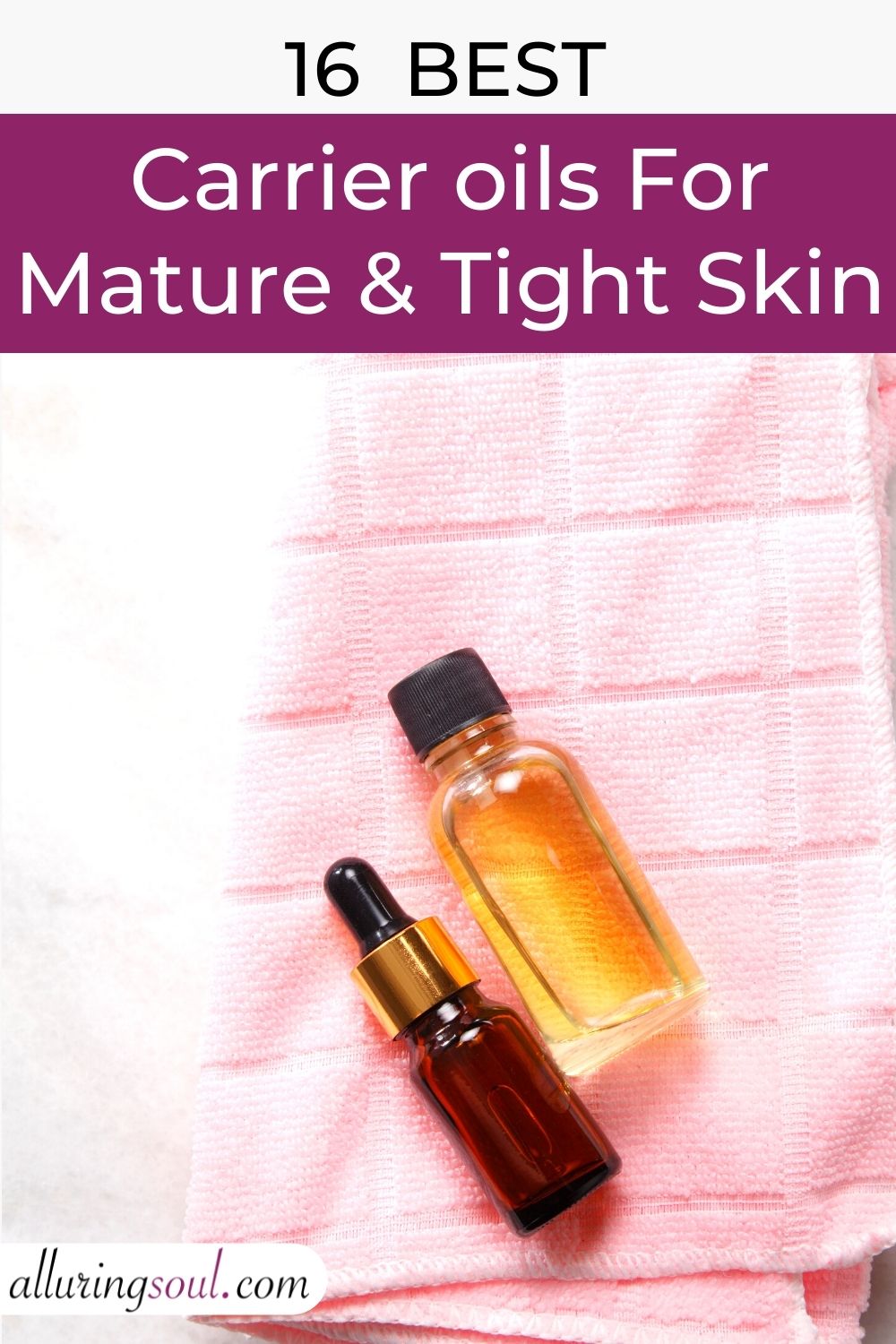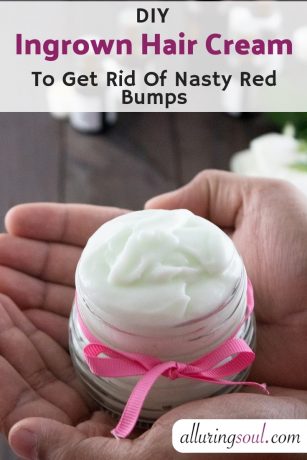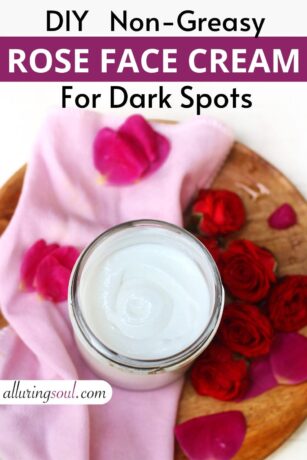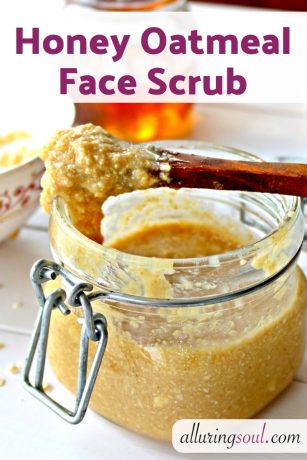Your skin is exposed to every environmental condition like pollutants, free radicals, dryness, and humidity. The impact of these factors on your skin can be seen through wrinkles, lines, spots, and flaking skin. While these issues can make your skin look aged, nature has a miraculous solution: carrier oils. Carrier oils for mature skin are infused with the goodness of multiple vitamins, fatty acids, and other nutrients and these carrier oils can make mature skin look more youthful, firm, tight, and rejuvenated.
Let’s explore more about the best carrier oils for mature and tight skin and how to use them.
What Is Carrier Oil?
Carrier oils are extracted from plant parts like seeds and nuts that have beneficial properties. For example – olive oil, coconut oil, sunflower oil, etc.
Although the main task of carrier oils is to carry essential oils into the skin, they work very well as standalone products in skincare. Most carrier oils are extracted through various processes like CO2 extraction or cold pressing. Needless to say, unrefined and cold-pressed carrier oils offer more benefits than refined oils.
Since carrier oils are extracted from plant parts, they combine a wide variety of nutrients together like fatty acids, vitamins, phytosterols, and trace minerals. They are also free from the harsh chemicals of lab-manufactured cosmetic products.
Why Carrier Oil Is Important For Mature skin?
Mature or aging skin can happen due to various reasons. The main signs of mature skin are wrinkles, lines, age spots, sagging skin, and dullness. The combination of various vital nutrients in carrier oils helps to alleviate all these skin concerns. The reasons why carrier oil is important for mature skin are as follows:
1. Carrier oils contain fatty acids. These are helpful in moisturizing the skin and healing the skin carrier.
2. Almost all carrier oils contain vitamins A, C, E. Vitamin A can reduce the appearance of wrinkles, lines and boost collagen production. Both vitamin C and E act as antioxidants. While vitamin C is responsible for reducing spots, vitamin E protects the skin from free radical damage.
3. Carrier oils also contain phytosterols that are responsible for being a good emollient and hydrating agent.
16 Best Carrier Oils For Mature Skin And Tight Skin
The best carrier oils for mature skin are as follows:
1. Rosehip Oil
- Comedogenic rating: 1
- Absorption speed: Very fast
- Fatty acid content: Linoleic acid: 44%
Oleic acid: 14%
Rosehip oil is derived from the seeds of rosehip, a wild shrub that grows in Mexico. Rosehip oil is a lightweight oil that gets absorbed into the skin fast and does not leave any residue.
Mature skin loses moisture fast and looks dry and wrinkled. Rosehip oil has linoleic and oleic acid that penetrates deep inside layers of skin and moisturizes it from within. Rosehip oil has beta-carotene which converts to vitamin A inside the skin. Vitamin A or retinoic acid has the ability to reduce the signs of aging like wrinkles and fine lines.
Rosehip oil can also boost collagen production and improve the elasticity and tightness of the skin. Vitamin E present in rosehip oil acts as an antioxidant. It prevents oxidative stress on the skin and prevents the formation of age spots.
2. Argan Oil
- Comedogenic rating: 0
- Absorption speed: Fast
- Fatty acid content: Linoleic acid: 37%
Oleic acid: 43%
Dubbed as the “liquid gold”, argan oil is known for its multifaceted benefits. It is extracted from the nuts of the argan seeds found in Morocco. Argan oil is a non-comedogenic occlusive agent. This means that it can lock the moisture on the epidermis of the skin without clogging the pores. This is a great advantage for mature skin which has the inability to retain moisture.
Not only just as a facial oil, but argan oil is also used in body care and hair care products because of its nourishing properties. Argan oil can help people with matured skin achieve a radiant and smooth complexion.
Argan oil is rich in oleic and linoleic acid. Both these acids, especially oleic acid are known for their moisturizing properties. They can nourish the skin, make it soft and reduce the dryness and flakiness of aging skin. Argan oil contains vitamin A which has anti-aging properties. It can reduce wrinkles and make the skin appear smooth. It also boosts collagen production.
The presence of vitamin E in argan oil makes it an excellent anti-inflammatory agent. It can fight the UV ray and free radical damage and prevent hyperpigmentation.
3. Apricot Kernel Oil
- Comedogenic rating: 2-3
- Absorption speed: Fast
- Fatty acid content: Linoleic acid: 23%
Oleic acid: 70%
Although apricot kernel oil has a higher comedogenic rating than other carrier oils, it is very beneficial for dry and mature skin. It is extracted from the kernel of the apricot and serves as a good substitute carrier oil for those who are allergic to oils extracted from nuts.
Apricot kernel oil has oleic acid which can keep the skin soft and supple. It also works in reducing wrinkles and strengthening the skin barrier. The presence of linoleic acid in apricot kernel oil helps it to have moisturizing properties. Being lightweight, it can penetrate and moisturize several layers of the skin.
Other important acids present in apricot kernel oil include palmitic and stearic acid. Both these acids have emolliating properties and keep the skin smooth and firm. Apricot kernel oil is enriched with vitamin A which offers multiple benefits for mature skin. It can slow down the formation of wrinkles and lines on the skin.
Additionally, vitamin A also boosts collagen formation that keeps the skin firm. Apricot kernel oil has vitamin E. this vitamin can act as an antioxidant. It prevents the damage caused by UV rays and free radicals on mature skin. Besides, it is also known to reduce hyperpigmentation.
4. Evening Primrose Oil
- Comedogenic rating: 2
- Absorption speed: Very slow
- Fatty acid content: Linoleic acid: 15%
Oleic acid: 47.4%
Linolenic acid: 0.9%
Having a long history of medical usage, evening primrose oil is believed to have originated from China. Essentially, evening primrose oil can be extracted from all parts of the Oenothera biennis plant, such as leaves, flowers, and roots.
While the refined oil has a pale yellow color, unrefined evening primrose oil has a greenish tint. It has a high percentage of saturated fatty acids and takes time to absorb fully. Evening primrose oil is one of the best transdermal oils and is especially suited for dry and mature skin.
Evening primrose oil has a high percentage of oleic acid. This makes it useful for mature skin that loses moisture fast. Oleic acid can make the skin look radiant and seal the skin barrier. Besides oleic acid, evening primrose oil also has linoleic acid that can moisturize the mature skin, nourish it and give a healthy appearance.
Evening primrose oil has small percentages of palmitic and stearic acids that are known for their emollient properties. They can be incorporated in body washes, as they have a cleansing effect on the skin without making the matured skin even drier.
5. Jojoba Oil
- Comedogenic rating: 2
- Absorption speed: Fast
- Fatty acid content: Eicosenoic acid: 65-80%
Linoleic acid: 5%
Oleic acid: 5-15%
Linolenic acid: 1%
The major constituent of jojoba oil is eicosenoic acid. This acid makes the oil non-comedogenic & fast-absorbing carrier oil and acts as a good emollient for the skin. It can seal the moisture for mature and dry skin, without becoming too oily.
Jojoba oil also has oleic acid which primarily acts as a moisturizer for the skin. It makes the skin soft, supple and prevents the cracks that appear on mature skin due to lack of moisture. Other important acids present in jojoba oil are palmitic, stearic, linoleic, and erucic acids. Together, this combination of acids acts as an emollient and helps mature skin protect its moisture reserve.
Jojoba oil is also rich in vitamin A. Vitamin A increases cell turnover and slows down the formation of signs of aging like wrinkles and sagging skin. Other vitamins in jojoba oil are vitamin E and vitamin B complex. They are useful in reducing skin inflammation, age spots, and the harmful effect of pollutants on the mature.
6. Grapeseed Oil
- Comedogenic rating: 1
- Absorption speed: Fast
- Fatty acid content: Linoleic acid: 63-72%
Oleic acid: 21%
Grapeseed oil is a non-comedogenic and very lightweight oil with a mild yellowish-green tint. When grapeseed oil is applied to the skin, it gets absorbed fast and leaves a glossy finish on the skin.
Grapeseed oil has a high content of linoleic acid. This makes grapeseed oil a good moisturizer for mature skin. Besides linoleic acid, it also has oleic acid which helps grapeseed oil keep mature skin soft and supple. Oleic acid can also reduce the formation of wrinkles on the skin.
Grapeseed oil also has other useful fatty acids like palmitic, stearic, and palmitoleic acid. They are beneficial for their emollient, anti-acne, and anti-inflammatory properties. Besides fatty acids, grapeseed oil contains beta-carotene which converts to retinoic acid inside the skin. Beta carotene can reduce spots, boost collagen and tighten the sagginess of mature skin.
Vitamin E present in rapeseed oil has antioxidant and healing properties. It can fight free radical damage, rejuvenate the skin barrier and reduce inflammation.
7. Pomegranate Seed Oil
- Comedogenic rating: 1
- Absorption speed: Average
- Fatty acid content: Linoleic acid: 10%
Oleic acid: 5%
Linolenic acid: 0.1%
Known for its extensive range of nutritional and cosmetic benefits, pomegranate has been used for ages. The seeds of pomegranate or Punica granatum are cold-pressed to extract this lightweight oil.
The primary fatty acid present in pomegranate seed oil is punicic acid. This acid can reduce the breakdown of collagen which is responsible for sagging skin. The pomegranate seed oil also contains linoleic acid, oleic acid, palmitic, and stearic acid. All these acids are responsible for moisturizing the skin and keeping it nourished and glowing. They also act as emollients that do not allow moisture to escape from the upper layers of skin.
Another important component of the pomegranate seed oil is phytosterols. These are beneficial for increasing cell turnover which prevents mature skin from looking dull and aged. The pomegranate seed oil has vitamin E which slows down the effect of free radicals and UV rays on mature skin.
8. Sunflower Oil
- Comedogenic rating: 0
- Absorption speed: Slow
- Fatty acid content: Linoleic acid: 59%
Oleic acid: 30%
Linolenic acid: 0.5%
Sunflower oil is obtained by the cold pressing method and has a pale yellow color. It is non-comedogenic and is used to address skin issues like eczema, psoriasis, dryness, and cracking. Sunflower oil has a high percentage of linoleic acid. This allows sunflower oil to get absorbed into the aging skin fast and moisturize it from within.
The oleic acid content in sunflower oil ensures that it has emolliating properties. Sunflower oil can not only hydrate mature skin but also form a protective barrier that does not allow moisture to escape. Additionally, sunflower oil has palmitic and stearic acids that contribute plumpness and smoothness to mature skin.
9. Meadowfoam Seed Oil
- Comedogenic rating: 1-2
- Absorption speed: Fast
- Fatty acid content: Eicosenoic acid: 60%
Linoleic acid: 4%
Oleic acid: 2%
The meadowfoam seed oil has a pale yellow color and is extracted through cold pressing. Being lightweight, it gets absorbed into the skin very fast.
The meadowfoam seed oil has a higher fatty acid content than natural sebum. This is very beneficial for mature skin that does not produce enough moisture and looks dull.
The meadowfoam seed oil has vitamin E which acts as an antioxidant. It protects against premature aging of the skin due to free radicals and sun damage. Another antioxidant that is present in meadowfoam seed oil is vitamin C. It can brighten up the appearance of mature skin. Additionally, it reduces spots on the aged skin and encourages the growth of new cells fast.
10. Safflower Oil
- Comedogenic rating: 0
- Absorption speed: Fast
- Fatty acid content: Linoleic acid: 70-80%
Oleic acid: 10-20%
Safflower oil is extracted from the seeds of safflower (Carthamus tinctorius), which is a variant of the sunflower family. It has a high rate of absorption and appears pale yellow in color. Safflower oil is known for its soothing and anti-inflammatory properties and helps to heal eczema and psoriasis-prone skin. It is used as light facial oil, as well as in cleansers and toners.
Safflower oil is rich in linoleic acid that can moisturize the skin. Additionally, it also contains oleic acid which is beneficial to reduce premature aging of the skin. Oleic acid can also fortify the upper layer of the skin that helps mature skin achieve an even tone.
The presence of palmitic and stearic acids in safflower oils makes it a good emollient for mature skin. They can develop a protective coating on the skin that does not allow the water to escape. Safflower oil contains palmitoleic acid that can brighten the complexion and prevent mature skin from looking dull.
11. Almond Oil
- Comedogenic rating: 2
- Absorption speed: Average
- Fatty acid content: Linoleic acid: 20-30%
Oleic acid: 62-86%
Linolenic acid: 0.4%
Identified by its characteristic golden yellow color, almond oil is slightly thicker than other oils. It takes time to absorb and leaves the skin smooth and lustrous.
The major part of almond oil is composed of oleic acid. This acid can nourish and moisturize the mature skin very well. Oleic acid also protects the moisture on top of the dry skin very well by forming a barrier. Since almond oil is relatively thicker, linoleic acid in almond oil helps it have a lighter consistency and carries it to the inner layers of the skin.
Almond oil contains stearic and palmitic acids. They act as a good emollient as well as exfoliate dry and mature skin. The palmitoleic acid in almond oil contributes to making mature skin look bright and radiant.
12. Kokum Butter
- Comedogenic rating: 1
- Absorption speed: Fast
- Fatty acid content: Linoleic acid: 0-2%
Oleic acid: 30-42%
Stearic acid: 50-62%
Palmitic acid: 2-6%
Kokum butter is a solid butter or oil at room temperature and it is extracted from the seeds of Garcinia Indica. It has an off-white appearance and is known for its intensely hydrating and cell regenerative properties.
Kokum butter is one of the primary ingredients of body butter, moisturizers, and creams. Kokum butter is rich in omega-6 and omega-9 fatty acids. Both these groups of acids are instrumental for moisturizing mature skin and maintaining a healthy skin barrier.
Kokum butter not only slows down the rate at which the skin cells degenerate, but also helps to improve cell proliferation. By accelerating the growth of skin cells, it helps mature skin look firm and youthful for a long time.
Kokum butter also contains vitamin E which is an excellent antioxidant. Vitamin E protects mature skin from the harmful free radicals and UV rays that cause oxidative stress on the skin. Kokum butter also acts as a hydrating agent. It can boost the water content of the skin and prevent the skin from looking wrinkled and dehydrated.
Kokum has stearic acid. It acts both as an emollient and cleanser. It can remove dirt and grease from the skin, but hold moisture over the epidermis. This gives mature skin a radiant glow. Kokum butter can prevent premature aging of the skin. It improves the elasticity of the skin and makes it firm.
13. Mango Butter
- Comedogenic rating: 1-2
- Absorption speed: Average
- Fatty acid content: Linoleic acid: 1-13%
Oleic acid: 34-56%
Palmitic acid: 3-18%
Stearic acid: 26-57%
Mango butter is derived from the seed of the mango. It is a semi-solid substance and melts at body temperature. Mango butter has moisturizing and emolliating properties that make it ideal for mature and drying skin.
Mango butter is rich in fatty acids like linoleic and oleic acid. These acids moisturize and nourish mature skin. Additionally, they also strengthen the stratum corneum of the skin so that it is not affected due to dryness and pollutants.
Mature skin can dry out quickly and cause itchiness. Mango butter soothes the itchiness of mature skin and prevents any redness and inflammation.
Mango butter also has anti-aging properties. It can smoothen out wrinkles and fine lines that develop on the skin. Mango butter is rich in vitamins C and E. Both these vitamins are antioxidants. While vitamin E fights free radicals and UV ray damage, vitamin C can reduce the age spots on mature skin and prevent hyperpigmentation.
14. Olive Oil
- Comedogenic rating: 2
- Absorption speed: Slow
- Fatty acid content: Linoleic acid: 5-15%
Oleic acid: 63-80%
Palmitic acid: 7-14%
Another highly soothing and nourishing oil for mature skin is olive oil. Extracted from the seeds of Olea europaea, this oil is slightly viscous and has a greenish-yellow color.
The main fatty acid present in olive oil is oleic acid. It can keep the skin soft and supple. Additionally, it strengthens the epidermal layer that prevents the skin from losing its moisture.
Other fatty acids in olive oil are linoleic, palmitic, and stearic acids. While linoleic acid can moisturize the skin up to several layers, stearic and palmitic acids are good emollients. These acids also have a cleansing effect on mature skin, without stripping it of moisture.
Olive oil is rich in vitamin E which is a good antioxidant. It slows down the process of oxidative stress on the skin which is caused by UV rays and free radicals. This helps mature skin to remain healthy and youthful for a long time.
Besides vitamin E, olive oil also contains other antioxidants like polyphenols and carotenoids. Together, they prevent the development of age spots, hyperpigmentation on mature skin. They can also protect the skin from inflammation, redness, and itching.
Olive oil contains a very useful compound called squalene. The chemical composition of squalene is very similar to the sebum produced by our skin. Thus, it makes up for the decreasing production of squalane by aging skin and helps it to retain its plumpness.
15. Sea Buckthorn Oil
- Comedogenic rating: 1
- Absorption speed: Slow
- Fatty acid content: Linoleic acid– 7%
Oleic acid– 29%
Palmitic acid– 31%
Palmitoleic acid– 30%
Sea buckthorn oil is a golden-colored liquid oil. Both the seeds and the pulp of sea buckthorn berries are used to produce the oil. Sea buckthorn oil is known for its oil-controlling properties. It also aids in reducing inflammation on the skin.
Sea buckthorn oil has a small amount of linoleic acid that helps to moisturize dry and mature skin. Additionally, it also contains oleic acid and other omega-6 and omega-7 fatty acids. These acids can hydrate mature skin and replenish the lost water content. Being good occlusive and emolliating agents, they do not allow the moisture to escape.
It also has vitamin A which boosts its anti-aging properties. Vitamin A, when absorbed inside the skin gets converted into retinoic acid. This acid can reduce wrinkles and lines on mature skin. In addition to this, Vitamin A promotes the production of collagen and elastin in mature skin that helps it to retain its tightness and plumpness.
Sea buckthorn oil is rich in antioxidants like vitamin C, vitamin E, polyphenols, and flavonoids. All these antioxidants neutralize the oxidative stress caused by particles, free radicals, and UV rays. They also prevent inflammation and dryness on mature skin that is caused due to compromised skin barriers.
16. Vitamin E Oil
- Comedogenic rating: 2
- Absorption speed: Slow
Vitamin E is an oil-soluble vitamin with antioxidant properties. Although there are eight types of compounds under vitamin E, tocopherol is the most widely used substance.
Vitamin E has antioxidant properties. It does not allow the free radicals in the atmosphere or those generated during the body’s metabolism to damage the barrier of mature skin. Additionally, it can also reduce age spots and hyperpigmentation that develops on the skin as it grows old.
Vitamin E also has anti-inflammatory and mild moisturizing properties. This ensures that the mature skin never lacks moisture and develops conditions like flakiness and itching.
How To Use Carrier Oil To Get Firm And Tight Skin?
The main function of carrier oil is used to carry other essential oils into the deeper layers of the skin. Since essential oils cannot be used on their own, they are diluted with the help of carrier oils. Generally, 98% carrier oil is mixed with 2% essential oil to create a balanced formulation.
The combination of essential oil and carrier oil can act as a moisturizer or a face serum. While essential oils deliver nourishment to the skin, carrier oils keep mature skin hydrated and protected. The prominent essential oils that are used in conjugation with carrier oils are lavender oil, rose oil, geranium oil, myrrh, and frankincense oil.
You can mix different essential oils and carrier oils together and make your favorite face serum for the tight skin of your choice.





No Comments